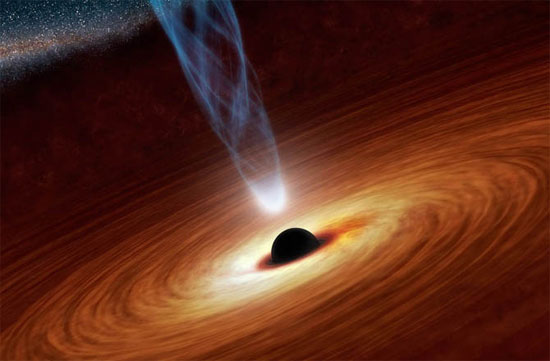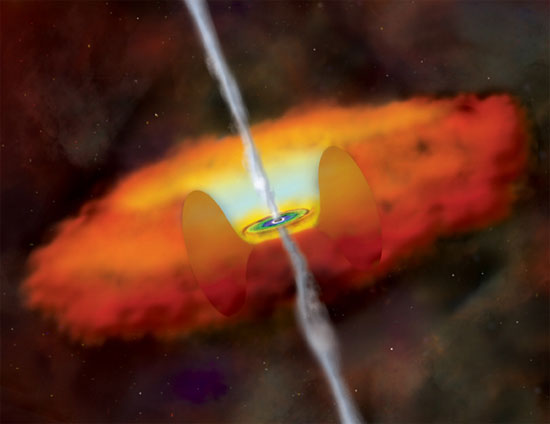Super-large black hole rotates rapidly near the speed of light
The supermassive black hole has a speed close to the speed of light. This is the discovery of scientists from the US Aeronautics Agency (NASA) thanks to the integration of two telescopes using X-ray technology.
Scientists have for the first time determined the rotational velocity of a supermassive black hole (SBH) using a combination of XMM-Newton telescopes (using soft X-ray technology) and the NuSTAR telescope (use use hard X-ray technology).
This SBH super black hole is in the middle of a galaxy named NGC 1365 . According to scientists, SBH has a maximum rotation speed of 84% of the speed of light rotation.

SBH image of the big black hole
SBH is the largest sized black hole in the universe discovered so far, with a mass of millions or even billions times the mass of the sun.
It is thought that almost all galaxies have an SBH in the middle of the center. These SBHs are surrounded by increasingly large dust and gas disc rings due to the massive supermassive black holes that attract more and more things inside.

Spectra around SBH
Scientists have found a way to determine that SBH has spin. Near SBH, the disk of gas and dust disk is increasingly emitting a certain amount of X-rays. In particular, X-rays containing iron atoms are easy to see.
However, the appearance of these atoms is very strange and emits a large amount of energy. The distribution of these iron atoms is considered to be evidence that SBHs rotate as well as determine the rotation speed of SBHs. Meanwhile, the X-ray spectrum of iron allows us to determine the rotation speed of SBH.
- The supermassive black hole rotates at the speed of light
- First determine the rotation speed of the black hole
- Discovering 'super black holes' is 12 times bigger than the Sun.
- Face hiding 'monster' black hole
- How is the largest 'monster' born in the universe?
- 10 fascinating facts about black holes
- Three black holes revolve around each other before the clash
- How to detect cosmic black holes
- The supermassive black hole is about to swallow 3 clouds of Earth
- The first opportunity to admire the super black hole
- 740 million light years away is a completely different universe of black holes
- Evidence of the power of black holes
 Van Allen's belt and evidence that the Apollo 11 mission to the Moon was myth
Van Allen's belt and evidence that the Apollo 11 mission to the Moon was myth The levels of civilization in the universe (Kardashev scale)
The levels of civilization in the universe (Kardashev scale) Today Mars, the sun and the Earth are aligned
Today Mars, the sun and the Earth are aligned The Amazon owner announced a secret plan to build a space base for thousands of people
The Amazon owner announced a secret plan to build a space base for thousands of people